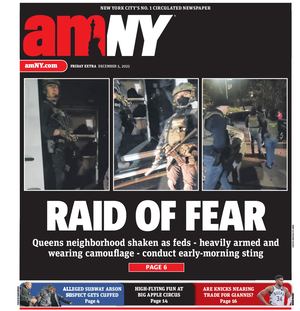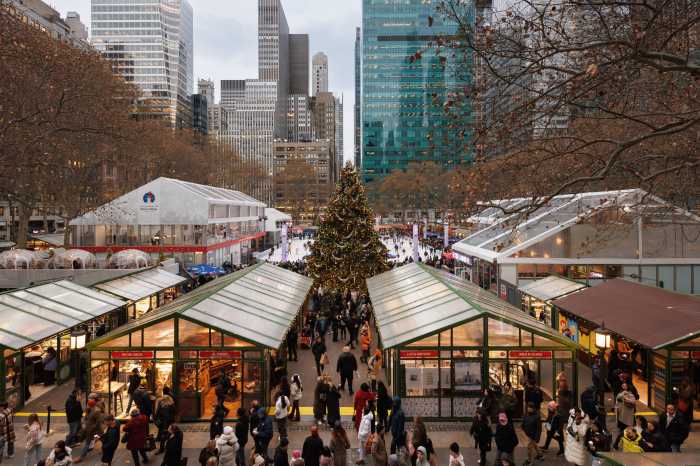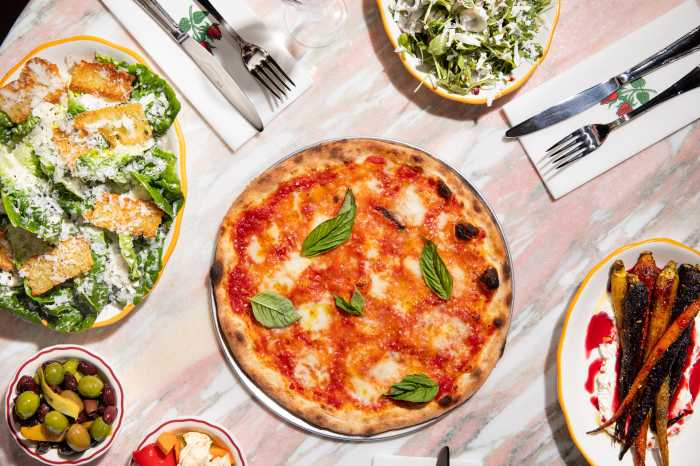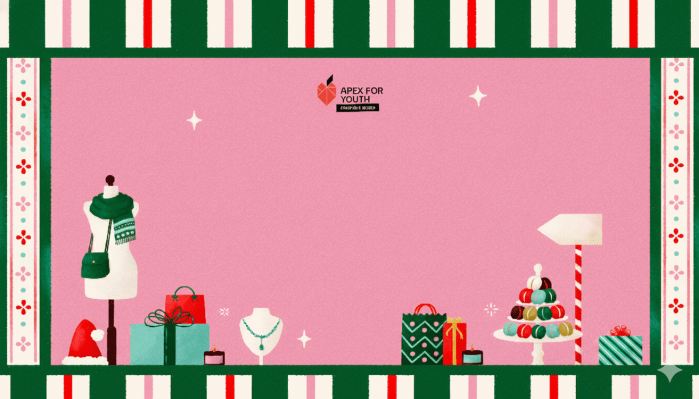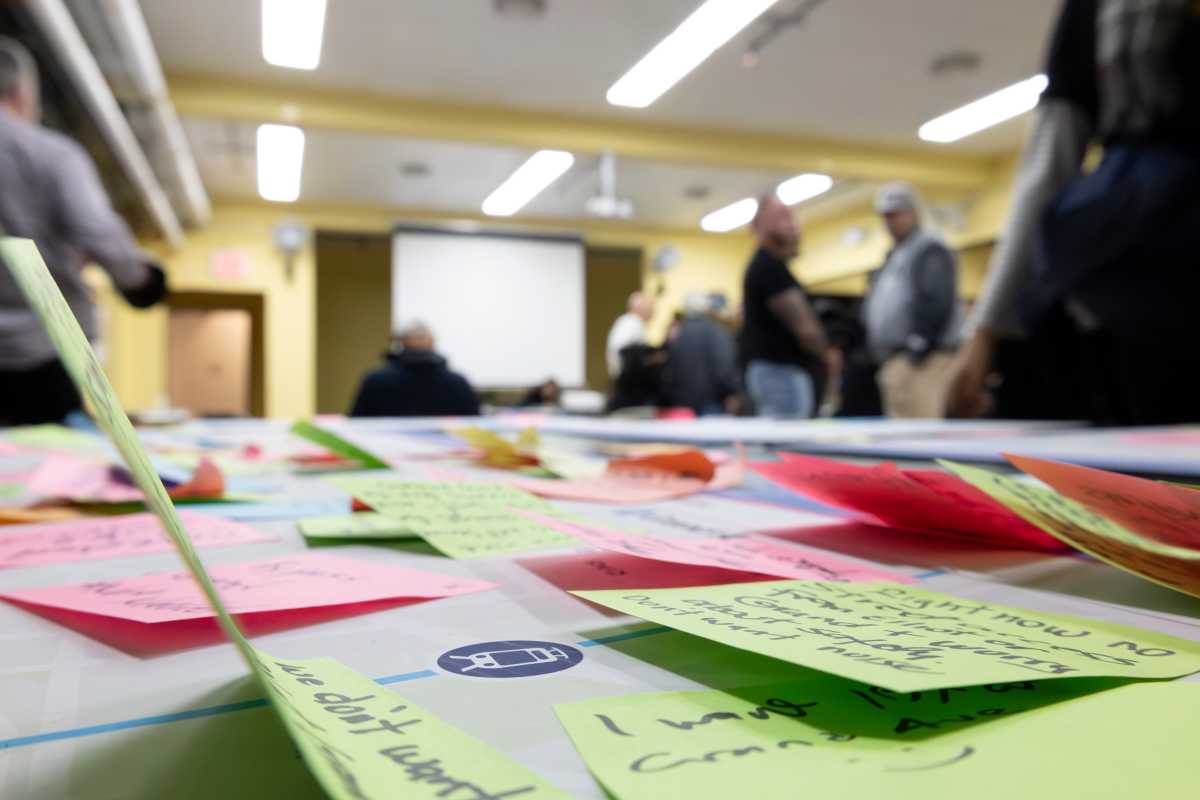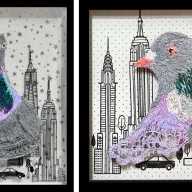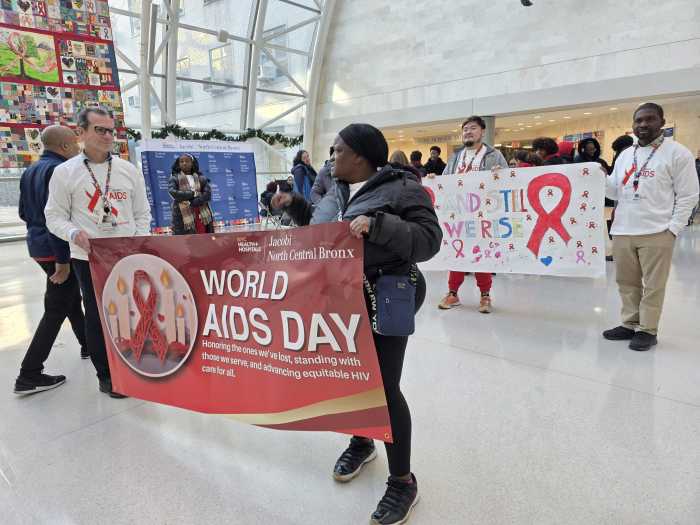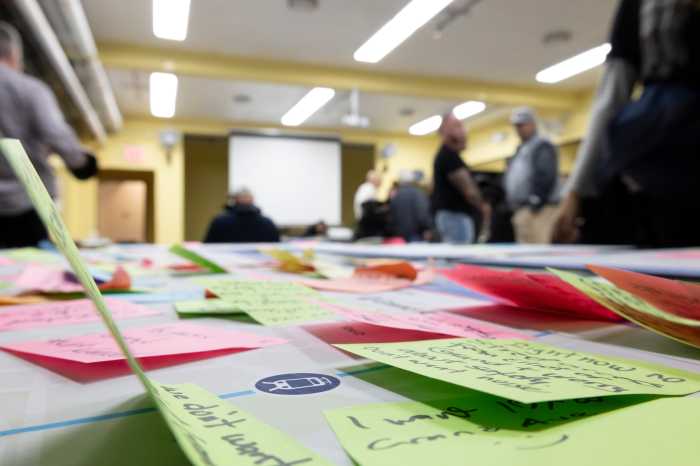Some of the city’s museums are banning and reconsidering their policies on “selfie sticks” — those sword-like extenders for cameras that allow users to capture trophy photos of themselves in “hey, ma — look at me!” environments.
The Brooklyn Museum bans them, “because of concerns that visitors could bump into art or other visitors,” although it permits non-flash photography for personal use, a public information officer said. The Guggenheim does not allow selfie sticks or photography beyond the rotunda floor.
The bans were first reported by Mashable.
The Museum of Modern Art allows “hand-held” devices for photos but nixes “any camera-extension devices.” Cooper-Hewitt National Design Museum, which re-opened in December after a three-year renovation, permits flash-free, noncommercial photography, but requests visitors check tripods, selfie sticks, bulky backpacks and anything else that could prove a tripping hazard to other visitors or to exhibits.
“This really is a safety issue for our visitors and for our objects on view,” explained communications and marketing director Jennifer Northrop.
El Museo del Barrio and the Metropolitan Museum of Art have no ban on the sticks at present, but both museums are weighing one. “They can’t pay attention when they’re taking these selfies, and we have balconies and open water that can be very dangerous,” said the Met’s chief digital officer Sree Sreenivasan, noting that in some areas, photography is prohibited because of the delicacy of the exhibitions. The Met permits non-flash photos but no video.
While the Met has yet to ban selfie sticks, a security guard there on Thursday told Stella Yim, 28, a tourist from South Korea, to dissemble and check hers before entering — a request she gladly obliged. While the stick had proved tremendously useful while snapping herself and her boyfriend at area landmarks, “I worry about,” interfering with other art enthusiasts, Yim said.
Handling the mushrooming zeal for self-documentation has become a vexing issue for cultural institutions: Museums and galleries relish the free marketing and promotion gained from patrons pumping out gushing reviews and images from their exhibitions on social media..
But the rise of auto-photography has also changed the way people engage with art, turning what was once a journey of reverence, enlightenment and enrichment into a safari of self-referential trophy pics. The dilemma is aggravated by soaring attendance for many museums, requiring visitors to see exhibits in ever closer quarters.
Despina Chatzivasiliou, 34, an archaeological and historical researcher from Paris visiting The Met on Thursday, applauded museums that ban the camera crutches. The devices are not “elegant,” and selfie stick users have made visiting the crowded Louvre, which permits them, into an art-peeping obstacle course, she said. “I don’t like them in the museum,” Chatzivasiliou said.
The Lower East Side Tenement Museum — which takes patrons through the old, cramped quarters inhabited by immigrants from 1863-1936 in groups no larger than 15 — prohibits all photography.y . “The tours are very much about getting the full experience of the museum and life at that time,” explained communications manager Jonathan Pace. People wanting to document themselves in situ can participate in “Snapshot” events in which they pay for the privilege of shooting themselves inside the cramped, history-packed period rooms.
Some artists cleverly tuck the compulsion for self-documentation into their art.
Rachel Lee Hovnanian’s show “Plastic Perfect” at the Leila Heller Gallery in Chelsea last fall featured realistic fake babies visitors were encouraged to pick up and photograph. The interactive “nursery” installation was at times a blizzard of camera flashes as visitors snapped pictures of themselves with their new “babies.” The social media promotion “helped draw a really big crowd for us,” said Lauren Pollock, gallery director. “People saw this on social media and really wanted to be a part of it.”
But encouraging photography isn’t appropriate for all art exhibits, said Pollock, noting “certain works on paper are very sensitive to light,” and “with the crowds for some of these blockbuster shows it’s an issue just being able to view the work.”
